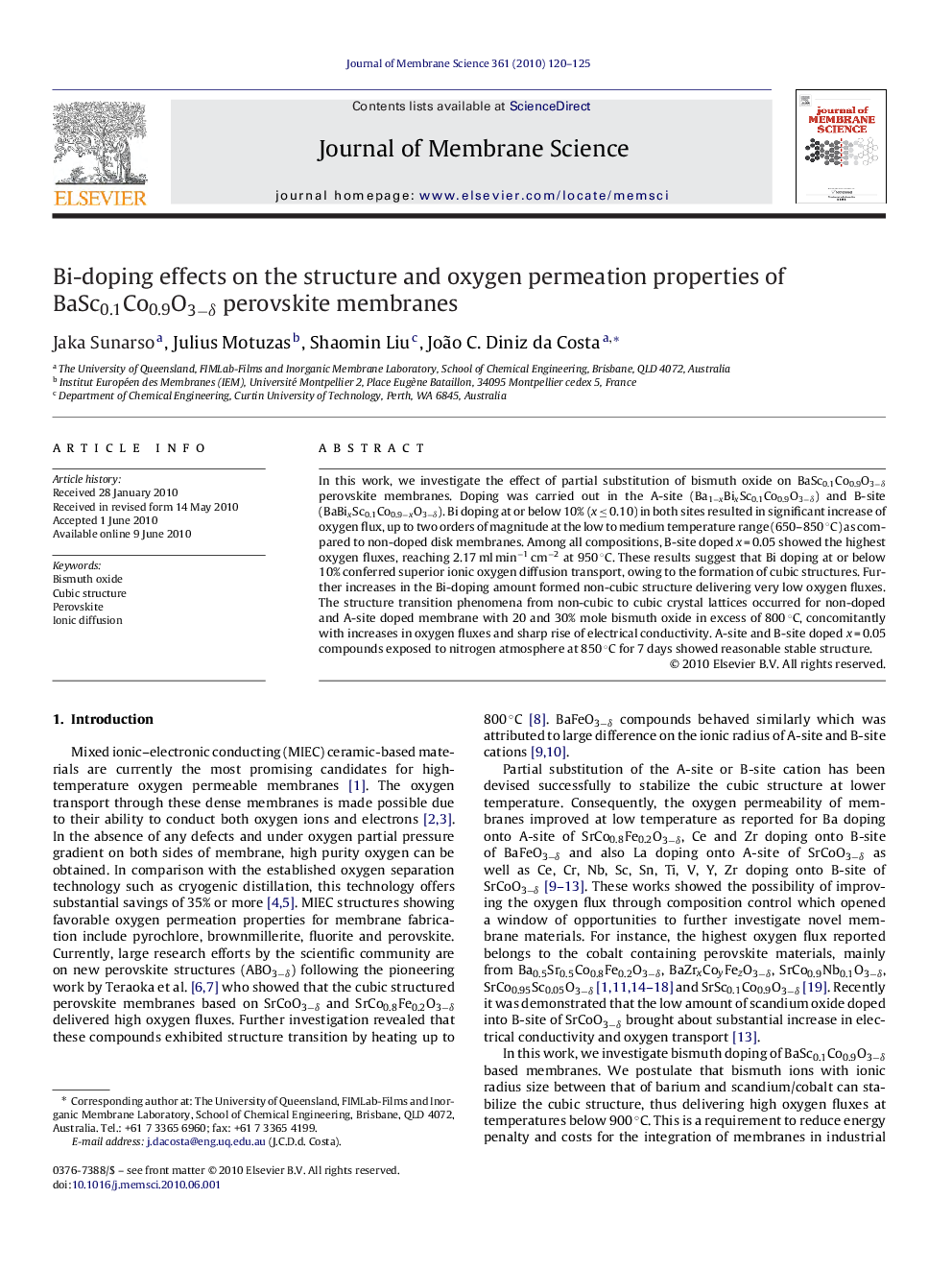| Article ID | Journal | Published Year | Pages | File Type |
|---|---|---|---|---|
| 636063 | Journal of Membrane Science | 2010 | 6 Pages |
In this work, we investigate the effect of partial substitution of bismuth oxide on BaSc0.1Co0.9O3−δ perovskite membranes. Doping was carried out in the A-site (Ba1−xBixSc0.1Co0.9O3−δ) and B-site (BaBixSc0.1Co0.9−xO3−δ). Bi doping at or below 10% (x ≤ 0.10) in both sites resulted in significant increase of oxygen flux, up to two orders of magnitude at the low to medium temperature range (650–850 °C) as compared to non-doped disk membranes. Among all compositions, B-site doped x = 0.05 showed the highest oxygen fluxes, reaching 2.17 ml min−1 cm−2 at 950 °C. These results suggest that Bi doping at or below 10% conferred superior ionic oxygen diffusion transport, owing to the formation of cubic structures. Further increases in the Bi-doping amount formed non-cubic structure delivering very low oxygen fluxes. The structure transition phenomena from non-cubic to cubic crystal lattices occurred for non-doped and A-site doped membrane with 20 and 30% mole bismuth oxide in excess of 800 °C, concomitantly with increases in oxygen fluxes and sharp rise of electrical conductivity. A-site and B-site doped x = 0.05 compounds exposed to nitrogen atmosphere at 850 °C for 7 days showed reasonable stable structure.
